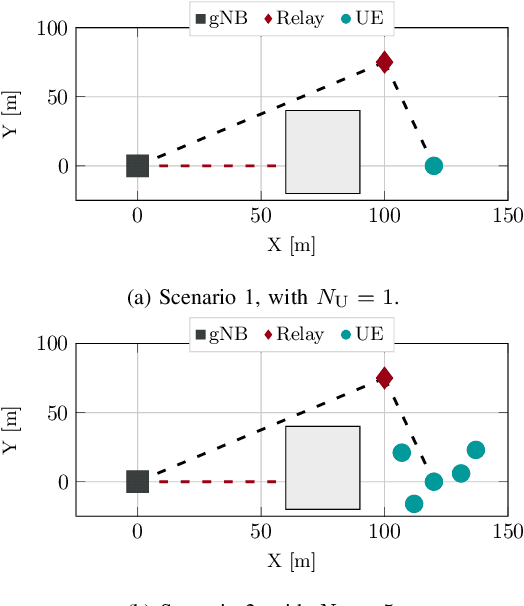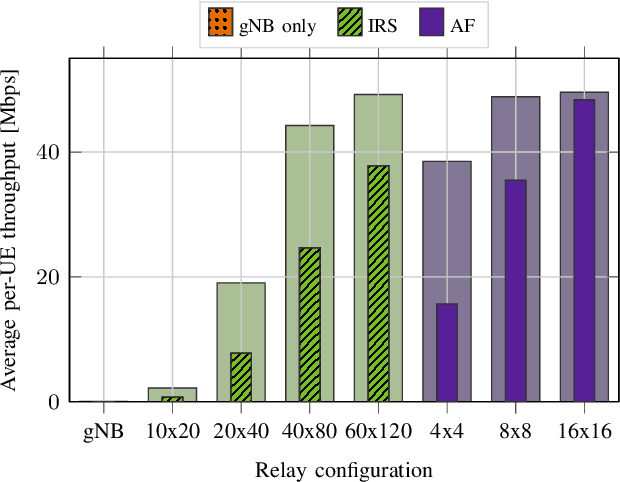Amir Ashtari Gargari
Department of Information Engineering, University of Padova, Italy
End-to-End Simulation of 5G Networks Assisted by IRS and AF Relays
Mar 04, 2022



Abstract:The high propagation and penetration loss experienced at millimeter wave (mmWave) frequencies requires ultra-dense deployments of 5th generation (5G) base stations, which may be infeasible and costly for network operators. Integrated Access and Backhaul (IAB) has been proposed to partially address this issue, even though raising concerns in terms of power consumption and scalability. Recently, the research community has been investigating Intelligent Reflective Surfaces (IRSs) and Amplify-and-Forward (AF) relays as more energy-efficient alternatives to solve coverage issues in 5G scenarios. Along these lines, this paper relies on a new simulation framework, based on ns-3, to simulate IRS/AF systems with a full-stack, end-to-end perspective, with considerations on to the impact of the channel model and the protocol stack of 5G NR networks. Our goal is to demonstrate whether these technologies can be used to relay 5G traffic requests and, if so, how to dimension IRS/AF nodes as a function of the number of end users.
Full-stack Comparison of Channel Models for Networks Above 100 GHz in an Indoor Scenario
Oct 13, 2021



Abstract:The Sixth Generation (6G) of mobile networks is expected to use carrier frequencies in the spectrum above 100 GHz, to satisfy the demands for higher data rates and bandwidth of future digital applications. The development of networking solutions at such high frequencies is challenged by the harsh propagation environment, and by the need for directional communications and signal processing at high data rates. A fundamental step in defining and developing wireless networks above 100 GHz is given by an accurate performance evaluation. For simulations, this strongly depends on the accuracy of the modeling of the channel and of the interaction with the higher layers of the stack. This paper introduces the implementation of two recently proposed channel models (based on ray tracing and on a fully stochastic model) for the 140 GHz band for the ns-3 TeraSim module, which enables simulation of macro wireless networks in the sub-terahertz and terahertz spectrum. We also compare the two channel models with full-stack simulations in an indoor scenario, highlighting differences and similarities in how they interact with the protocol stack and antenna model of TeraSim.
 Add to Chrome
Add to Chrome Add to Firefox
Add to Firefox Add to Edge
Add to Edge